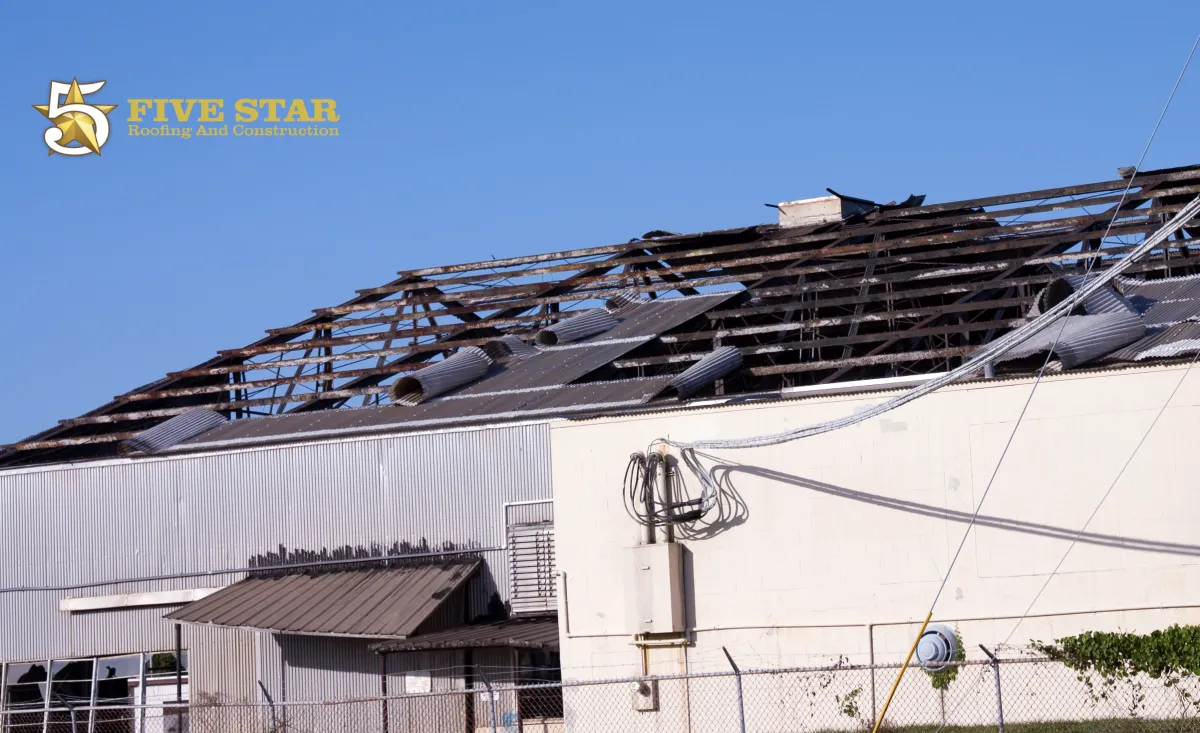
The Impact of Florida Storms on Commercial Roofs: What Business Owners Need to Know
Florida’s storm season is a reality that every business owner in the state must face. From torrential rains and high winds to hurricanes, the weather can be unforgiving—and it takes a significant toll on commercial roofs. These roofs, which are essential for protecting the structure, inventory, and people inside, are at constant risk of damage from the harsh Florida climate.
Understanding how Florida storms affect commercial roofs is key to protecting your investment, maintaining safety, and minimizing downtime. Here’s an overview of how storms impact roofs and what business owners can do to mitigate the damage.
1. High Winds and Roof Damage
Florida is no stranger to high winds, particularly during hurricane season, but even regular thunderstorms can produce gusts that cause significant damage. Roofs that are older or poorly maintained are especially vulnerable to wind damage. High winds can:
Lift and displace roofing materials, such as shingles, tiles, or membranes
Tear off flashing or vents, exposing the roof structure to water damage
Cause punctures or tears in flat roofing systems, leading to leaks
Create air pockets that accelerate the lifting of roofing materials
Once the protective layers of a roof are compromised, water can seep into the building, leading to potential structural damage, mold growth, or equipment loss. Business owners must regularly assess the integrity of their roof, particularly after major wind events, to prevent such issues.
2. Water Damage from Heavy Rain
Florida storms are often accompanied by heavy rainfall. If a commercial roof is not properly maintained or has existing weaknesses, the influx of water can lead to serious problems. Roofs with poor drainage systems or clogged gutters are particularly vulnerable. Here's how heavy rain impacts commercial roofs:
Leaks and water pooling: When water doesn’t drain properly, it can pool in low spots, leading to leaks. Even flat roofs, if not properly sloped, are at risk of water accumulation.
Water penetration through cracks: Small cracks in roofing materials can widen during storms, allowing rainwater to penetrate the structure.
Long-term water damage: Over time, consistent water intrusion can weaken roof materials, cause wood rot, and lead to insulation deterioration.
Even if a roof appears intact after a storm, business owners should have a professional roofer inspect it for hidden water damage that could cause problems down the line.
3. Impact of Debris and Hail
Another storm-related issue in Florida is debris. During hurricanes and thunderstorms, objects like tree branches, roofing tiles, and even garbage can be hurled across commercial properties. Debris can:
Cause punctures or dents in roofing materials, especially on flat or metal roofs
Damage protective coatings that help prevent rust or leaks
Scratch or tear membranes, leading to water intrusion and further deterioration
Hail is another potential threat. While not as common in Florida as in other parts of the country, hailstorms can cause severe damage to roofs, especially if the hailstones are large. Impact from hail can cause:
Cracks in shingles or tiles, leading to leaks
Dents or dings in metal roofing, which can compromise its effectiveness
Shattered skylights or roof vents, which can allow water into the building
Debris and hail can cause both immediate and long-term damage, making it important for commercial building owners to regularly inspect their roofs, especially after storms.
4. Storms and Roofing System Failure
The cumulative effect of repeated storms, especially over many years, can lead to the failure of roofing systems. Materials like shingles, tiles, and flat roofing membranes have limited lifespans, and constant exposure to the elements can accelerate wear and tear. After multiple storms, some of the common failures include:
Warping or buckling shingles: This happens when shingles become brittle from sun exposure and are then lifted by wind.
Compromised roofing membranes: Older roofs with single-ply membranes may deteriorate, leading to leaks and overall system failure.
Structural damage: If storms cause enough debris or water damage, the roof structure itself may weaken, leading to sagging or even collapse in extreme cases.
5. Preventative Measures and Roof Maintenance
The best way for business owners to protect their commercial roofs from Florida storms is through proactive maintenance and timely repairs. Here are some important steps:
Regular roof inspections: Have your roof inspected by a professional at least twice a year and after major storms to catch potential issues early.
Gutter and downspout cleaning: Keeping gutters clear ensures proper water drainage and reduces the risk of pooling water.
Roof coating and sealing: Applying protective coatings to your roof can help shield it from UV rays, rain, and wind damage.
Invest in a strong roofing system: If your roof is nearing the end of its lifespan, consider upgrading to a more durable system, like a metal roof, which can withstand high winds and debris impact.
Florida storms present a constant threat to commercial roofs, and the impact can range from minor damage to complete failure. By understanding how storms affect roofs and taking steps to protect and maintain your roofing system, you can safeguard your business from costly repairs and disruptions. Don’t wait for the next storm—take action now to ensure that your roof can stand up to Florida’s harsh weather.
Five Star Roofing & Construction is your Central Florida Tampa Roofing Companies and Storm Damage Repair experts in Tampa, Orlando, and cities throughout Florida for years. We are licensed, Bonded, Insured, and experienced. Offering Free Roof Inspections!


